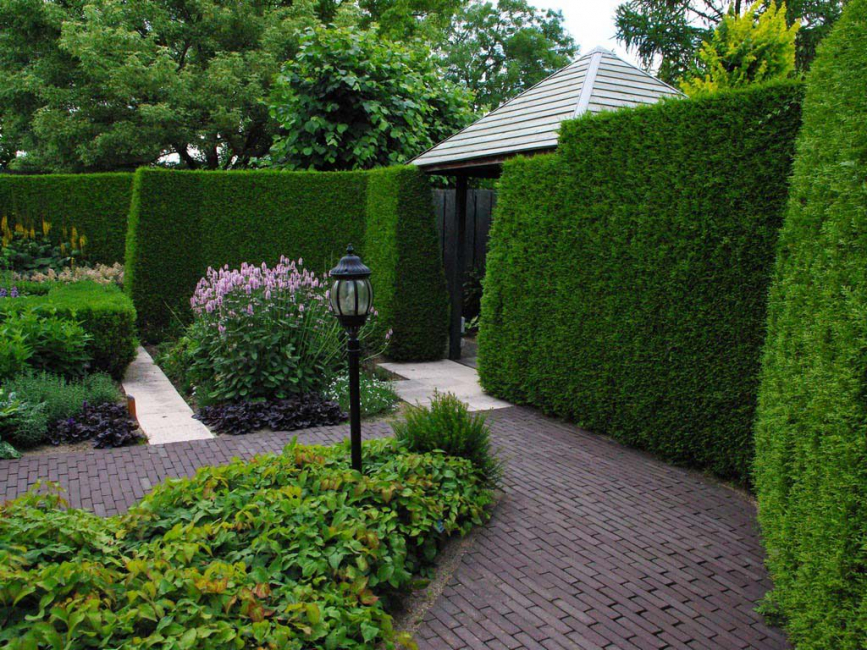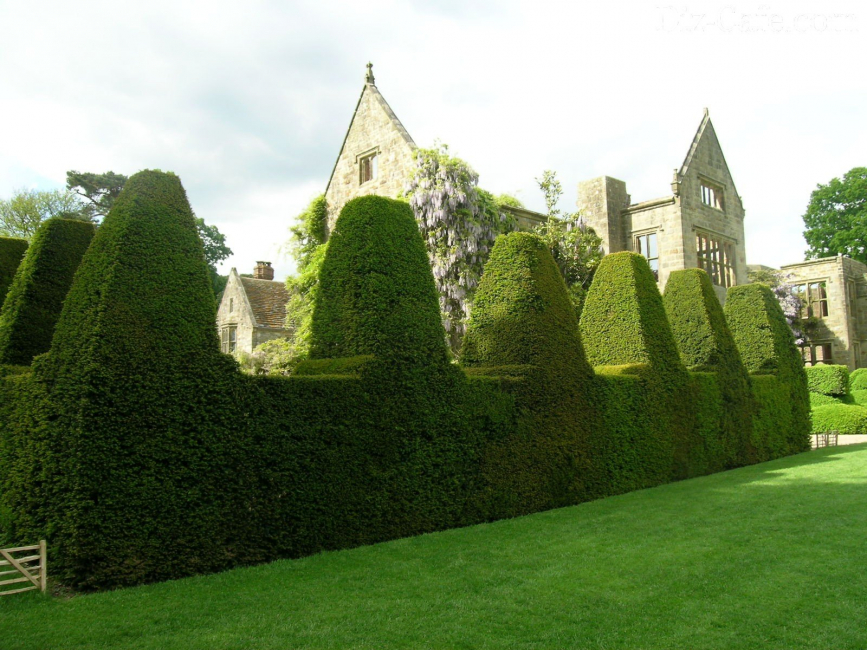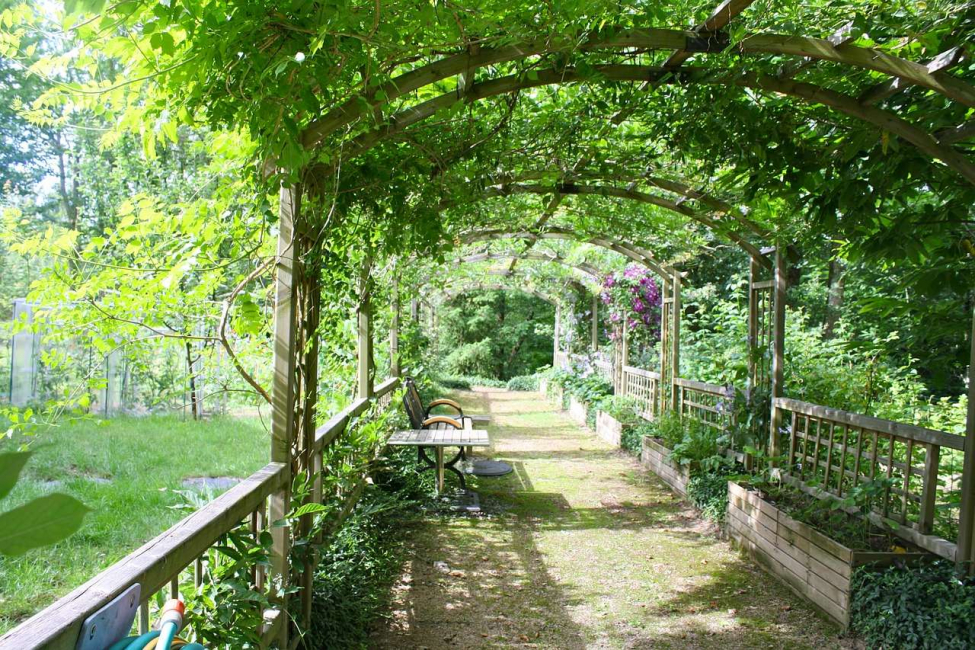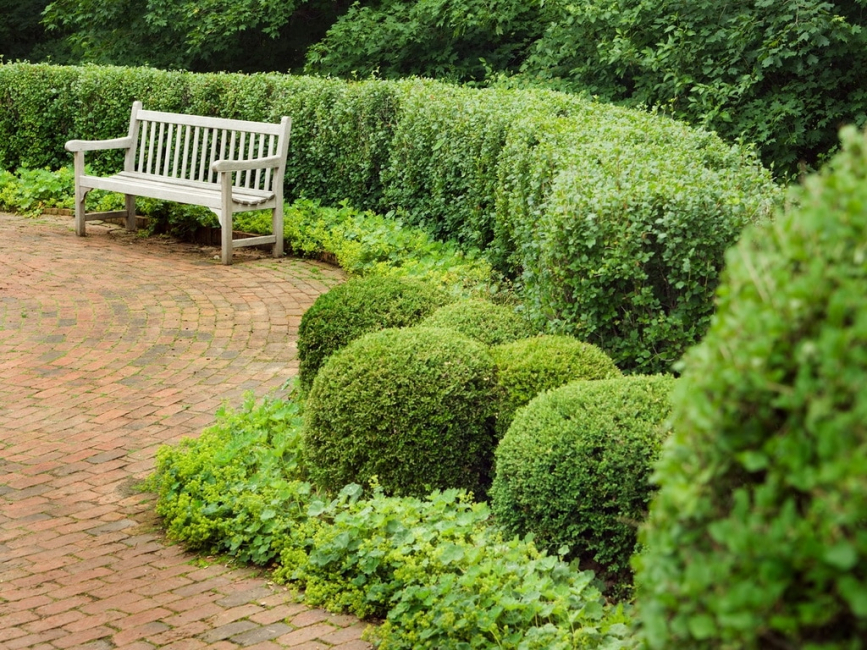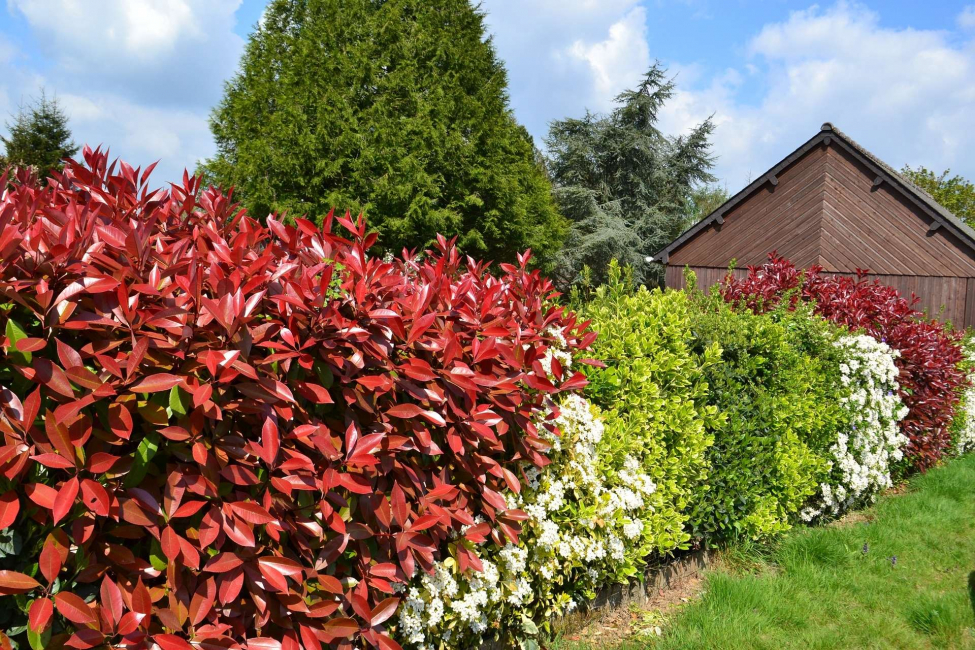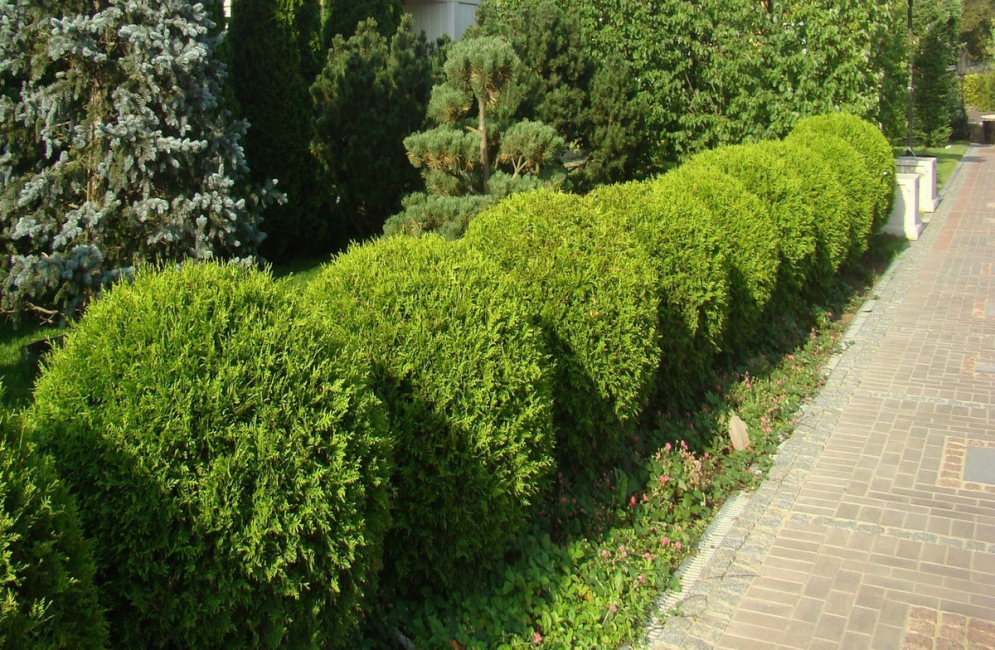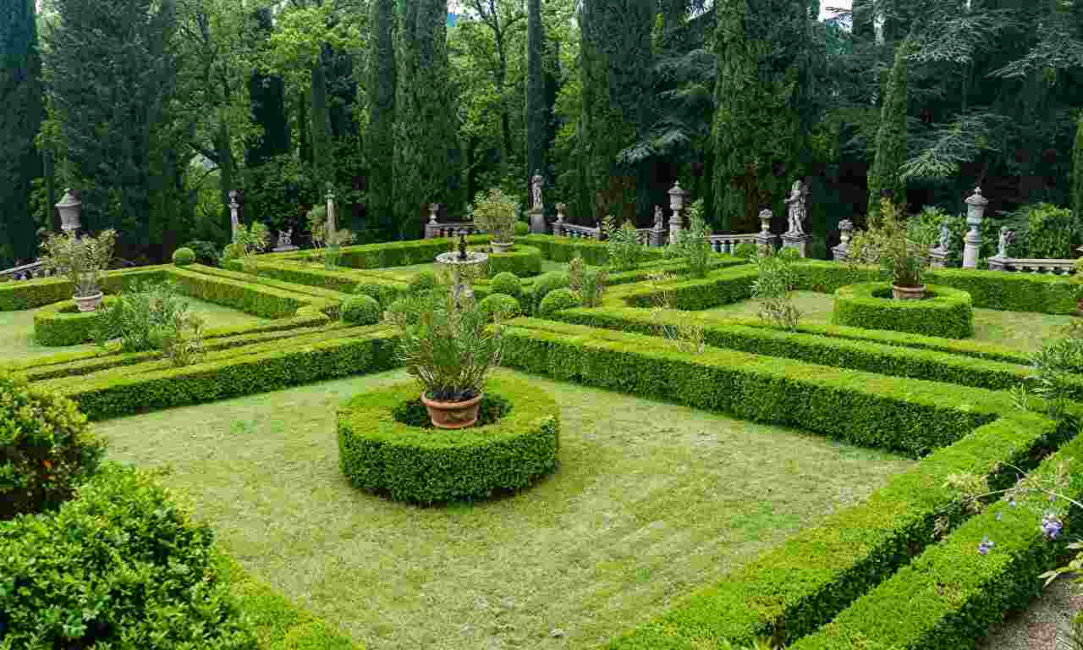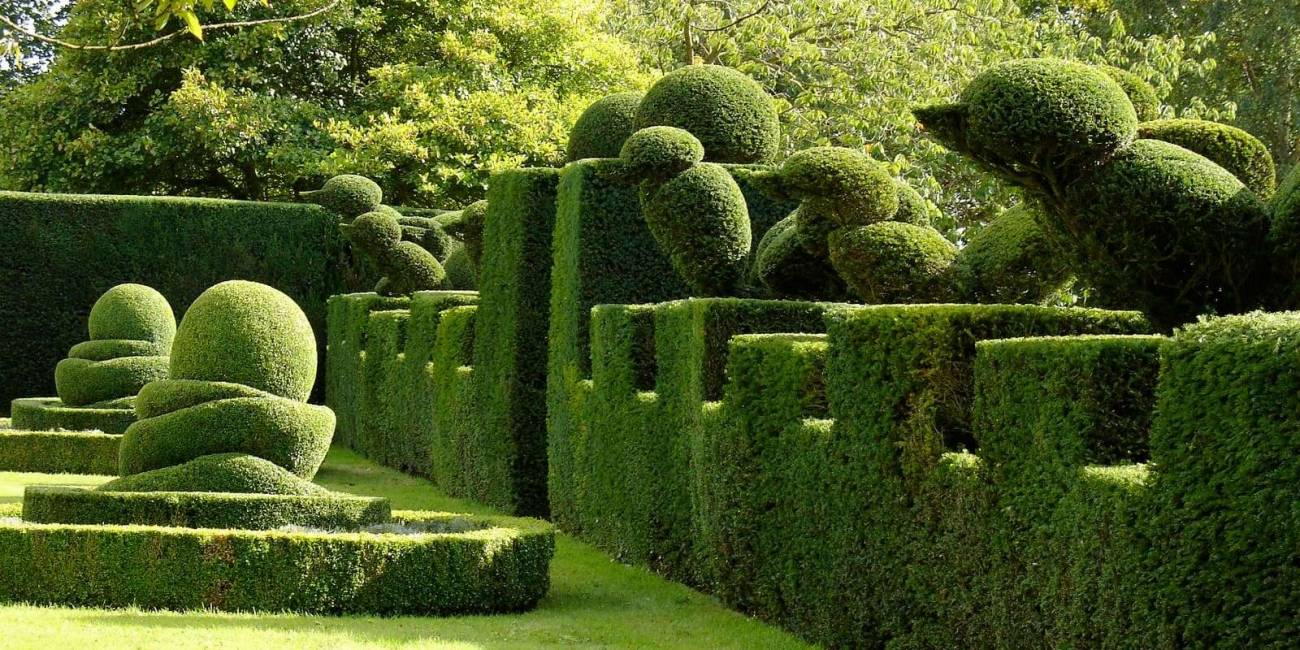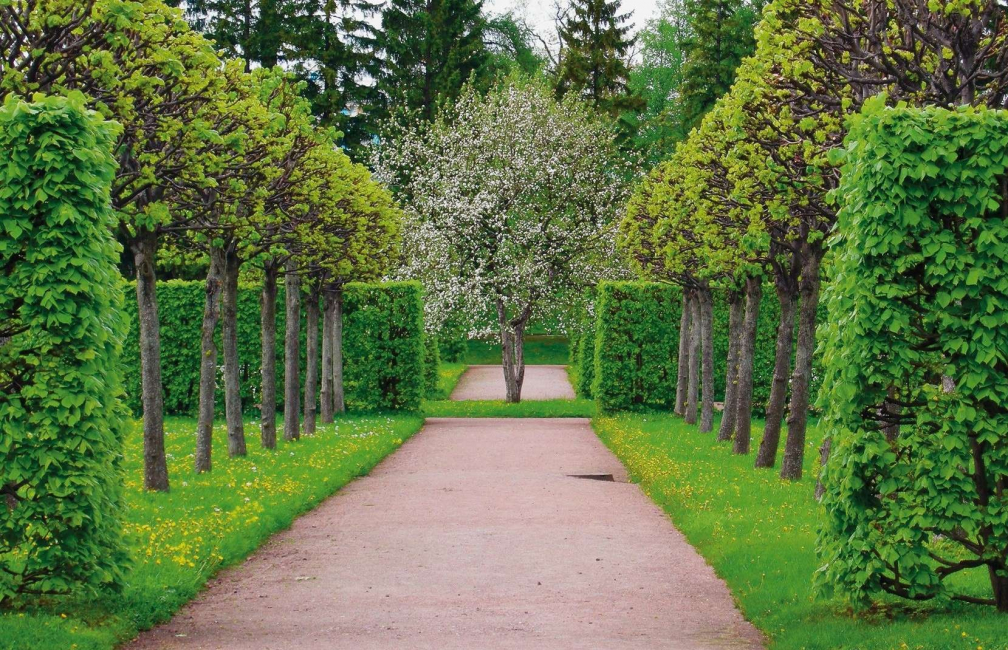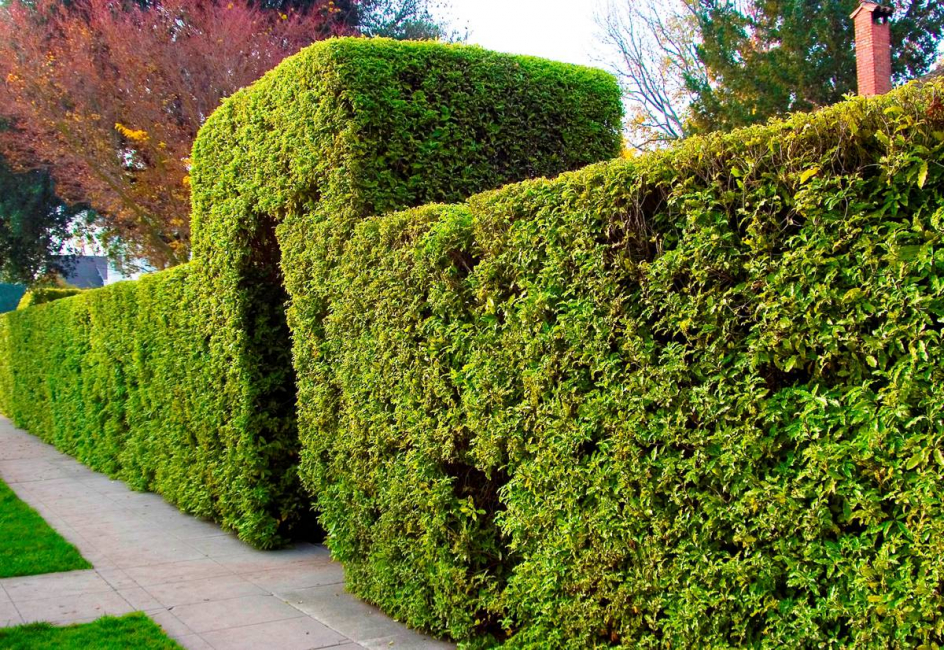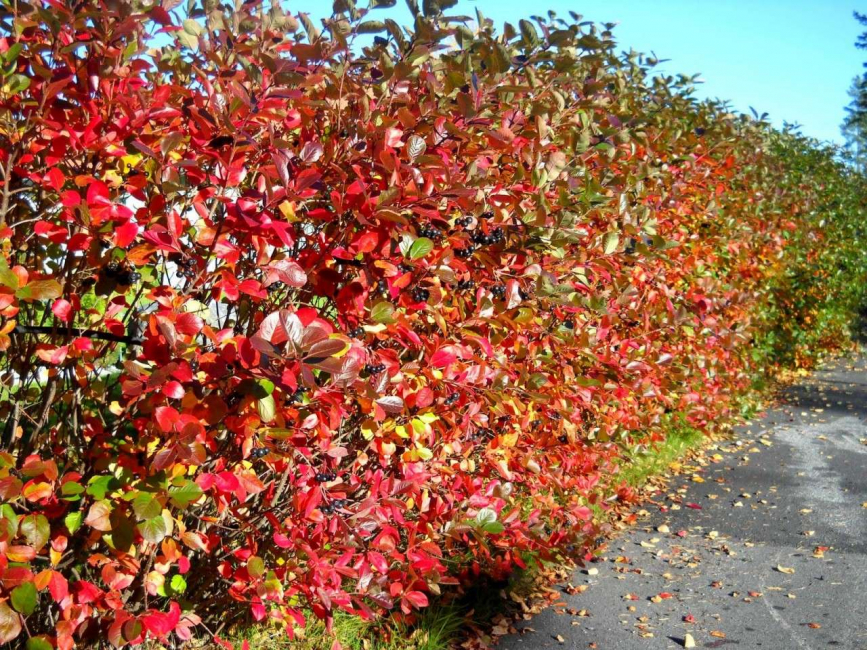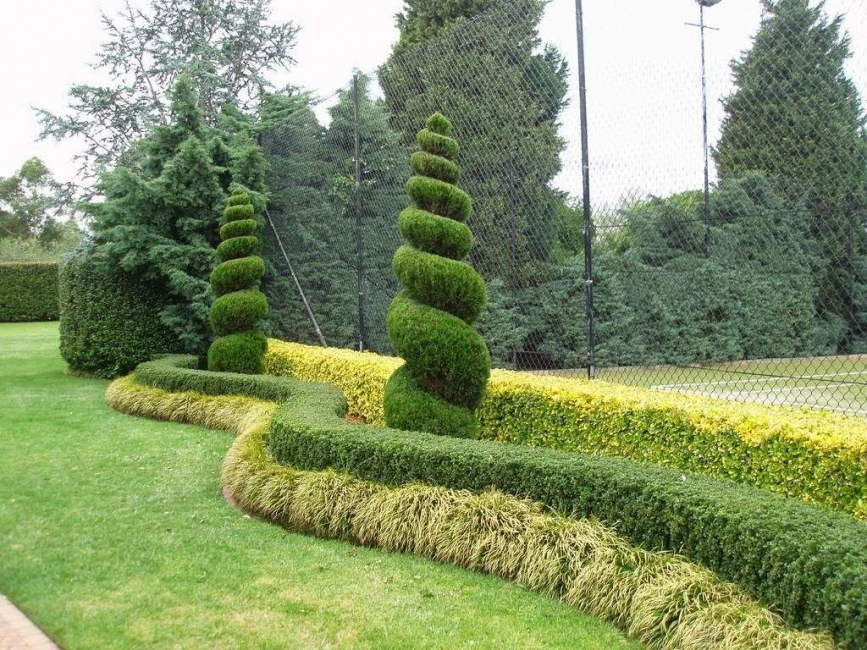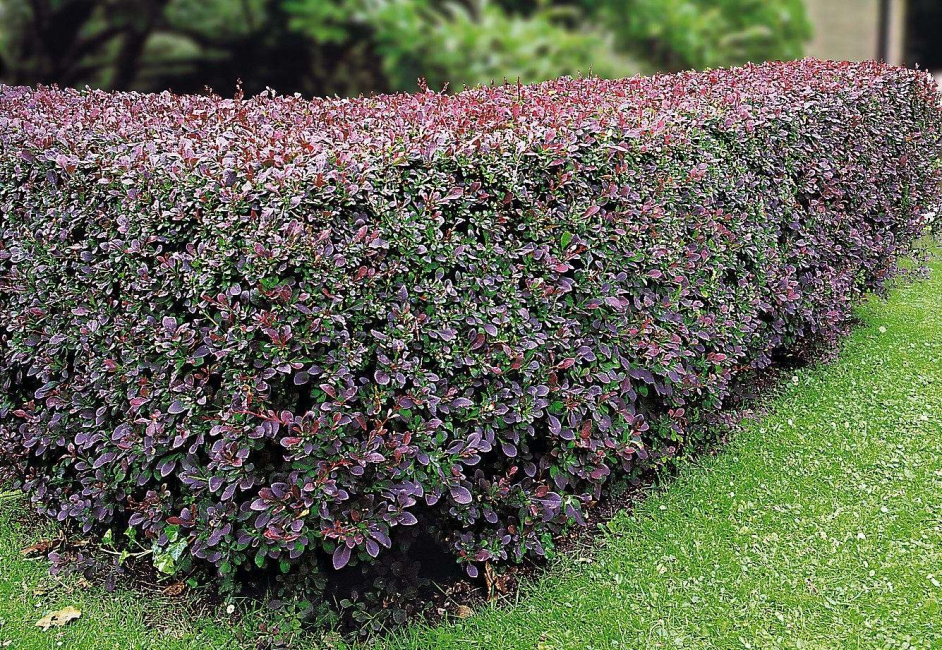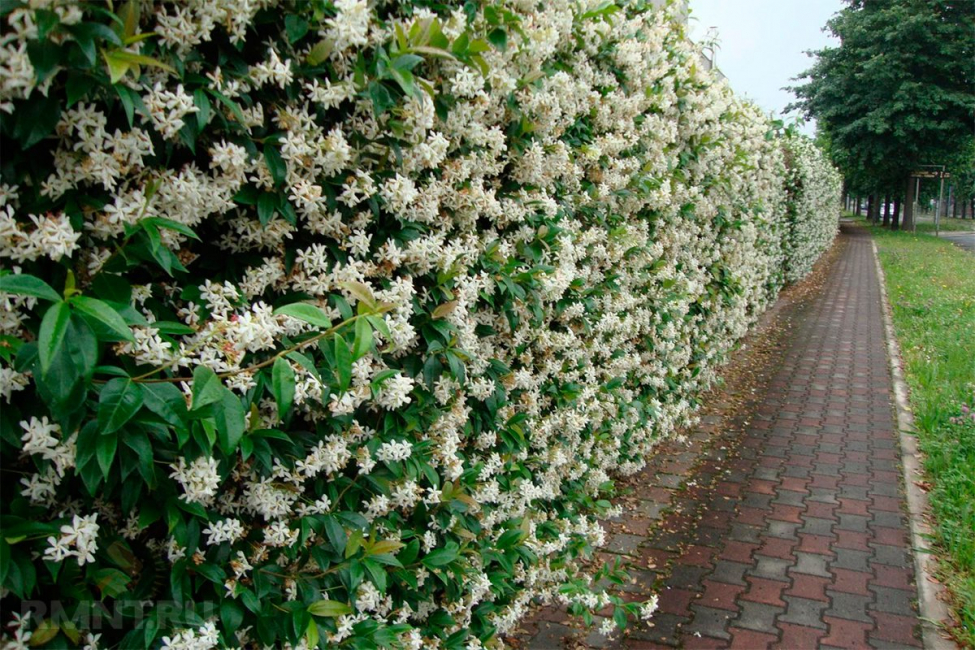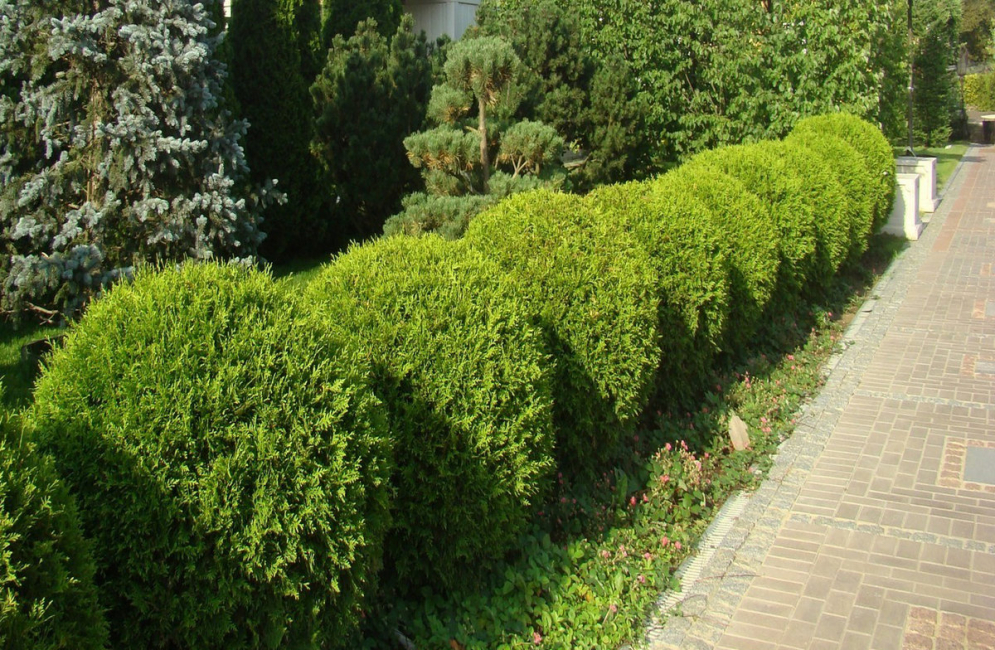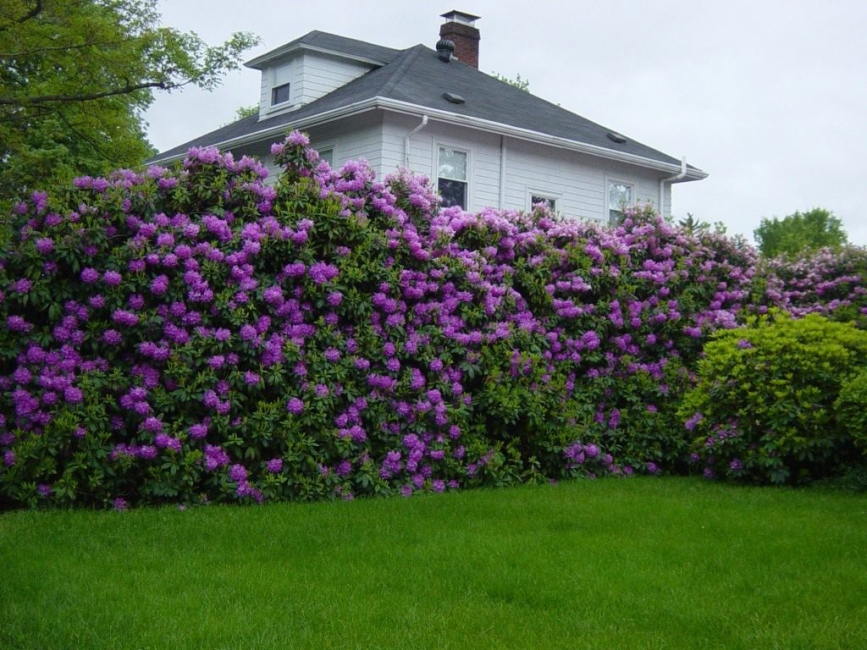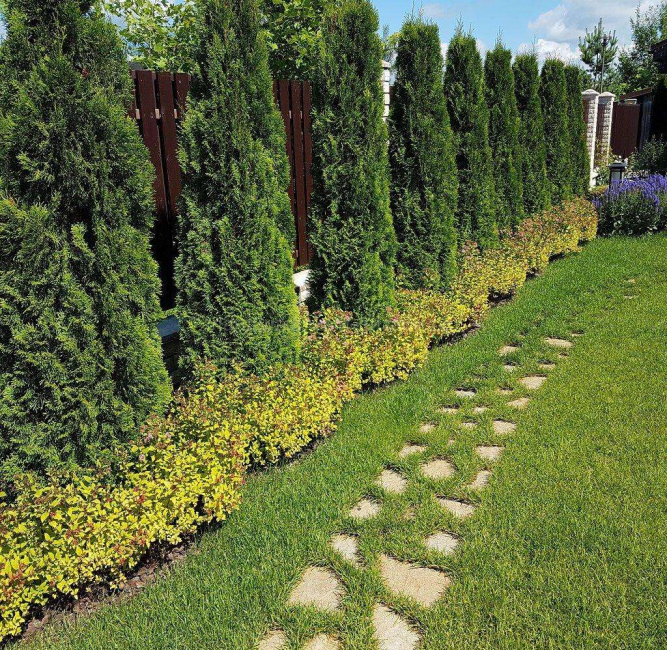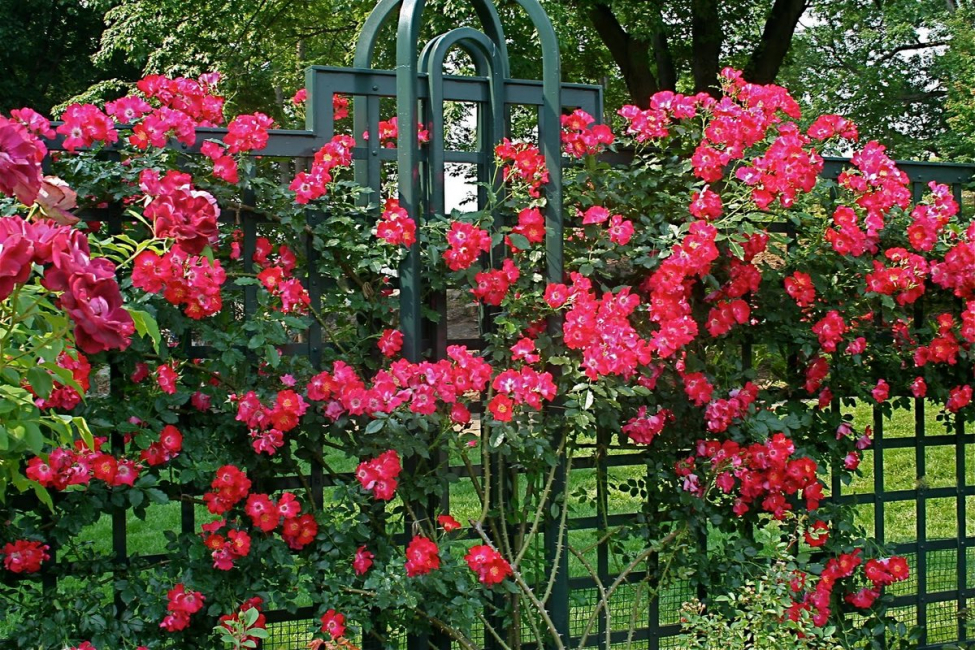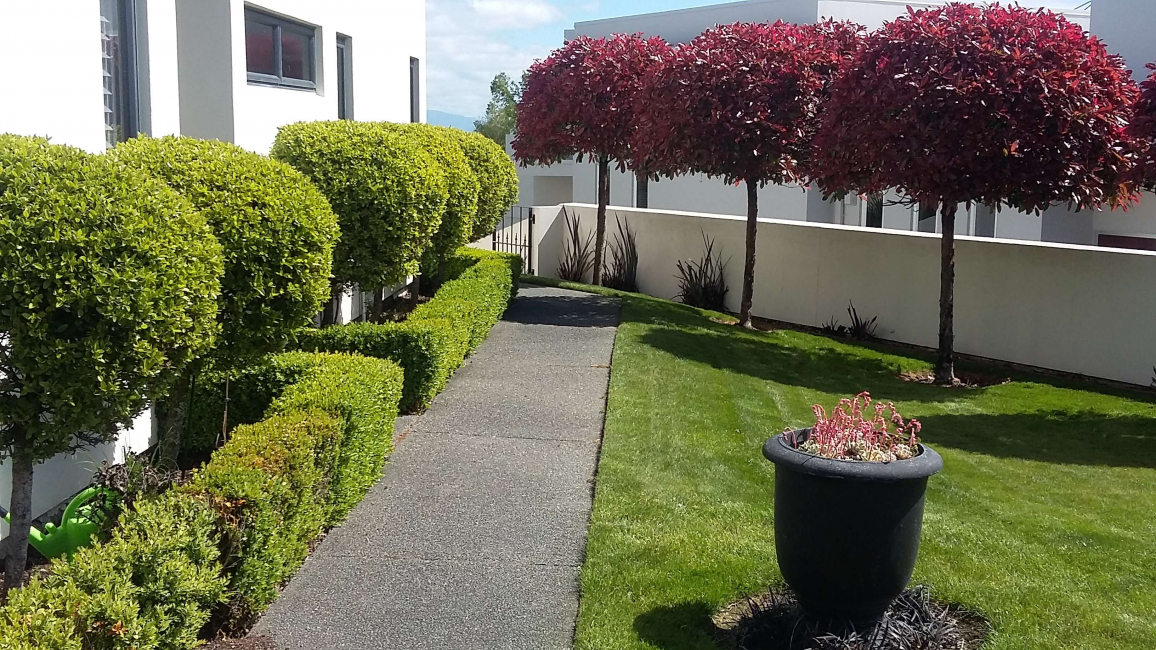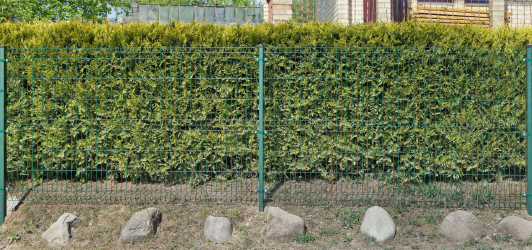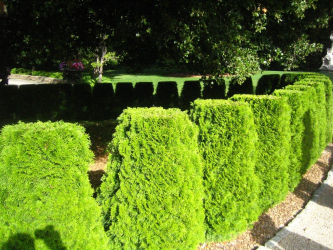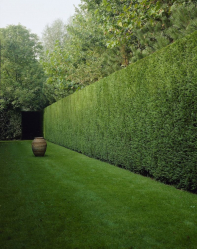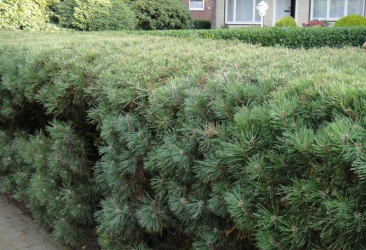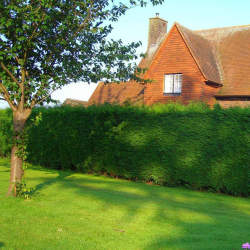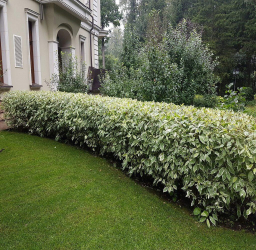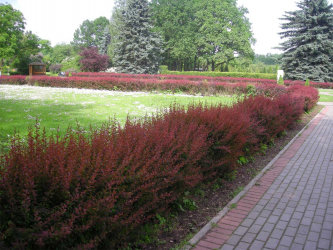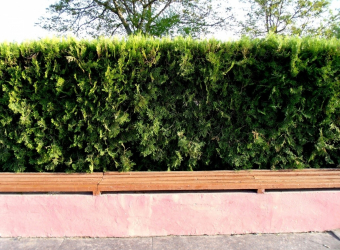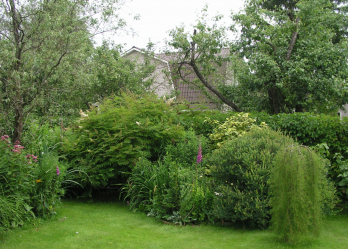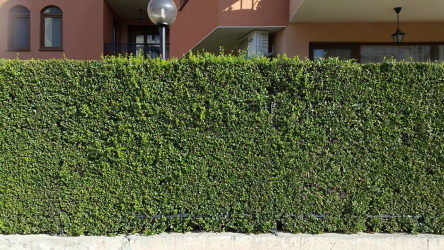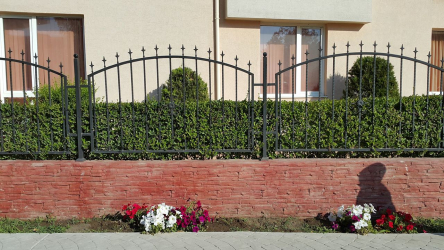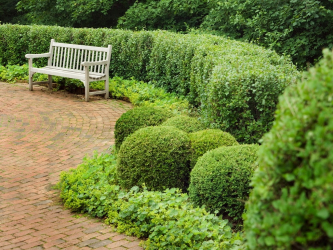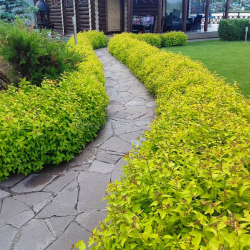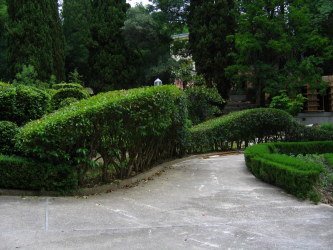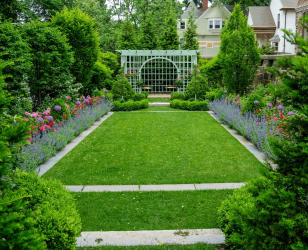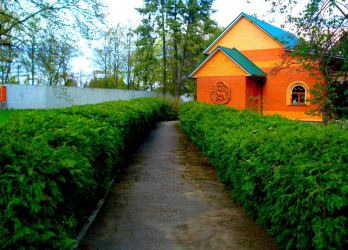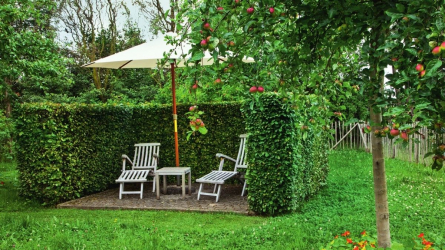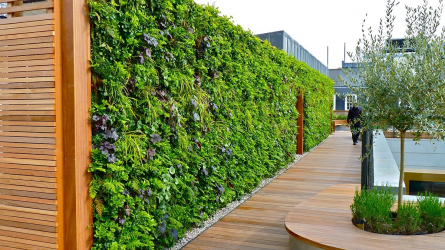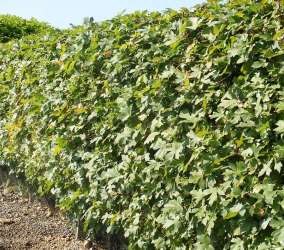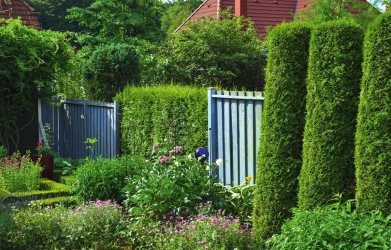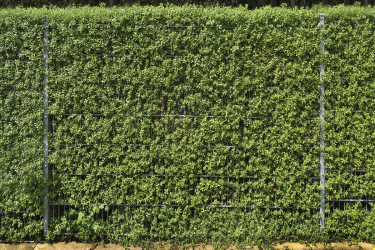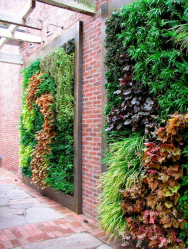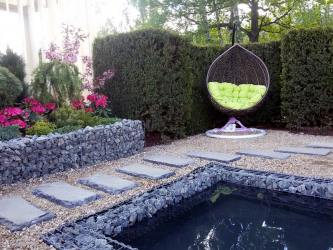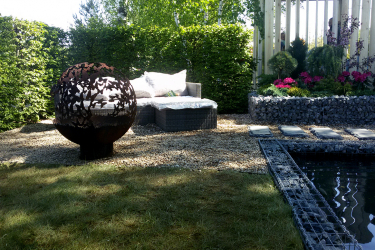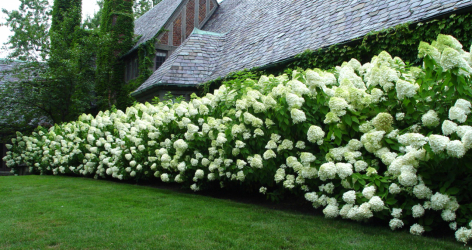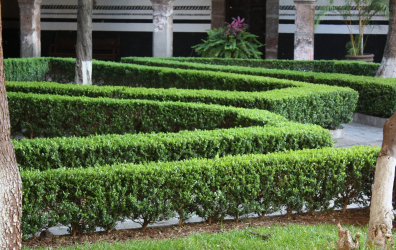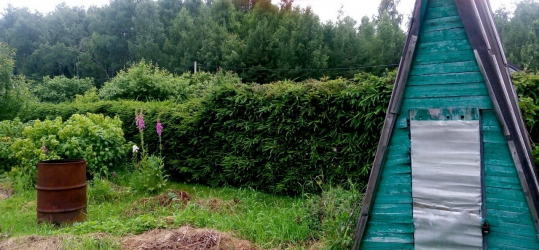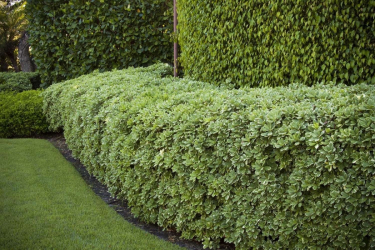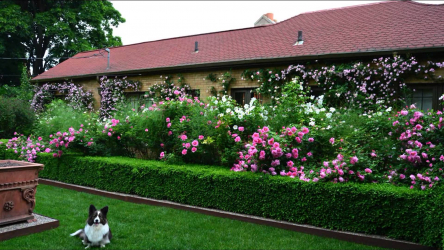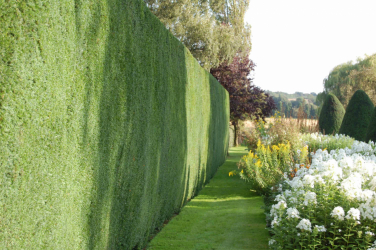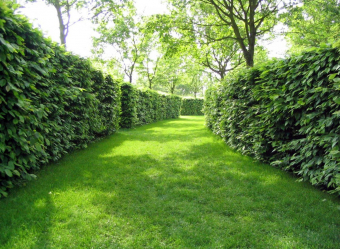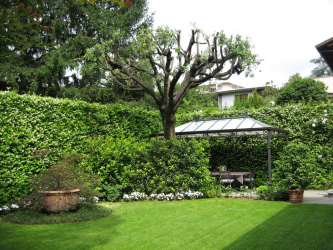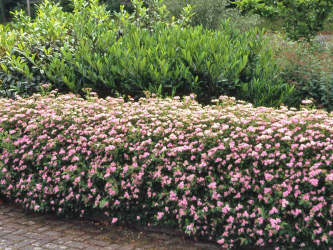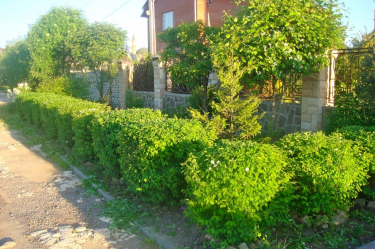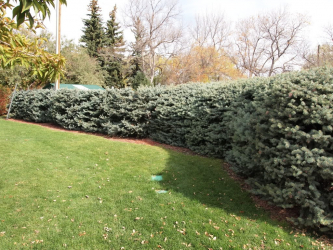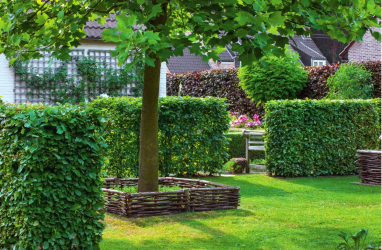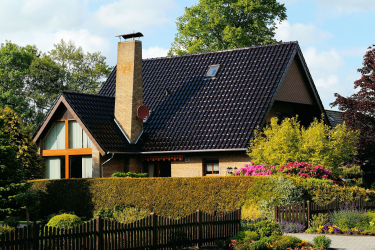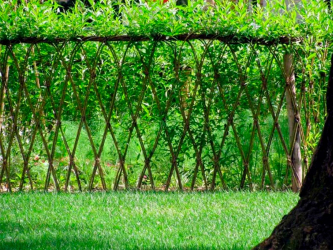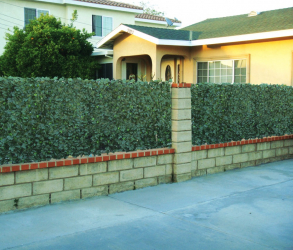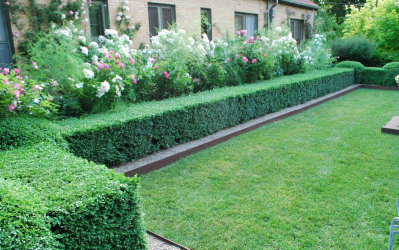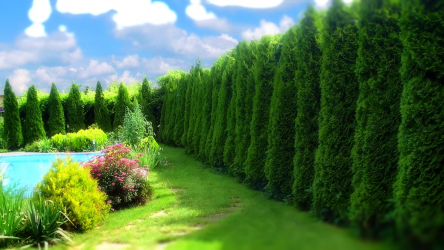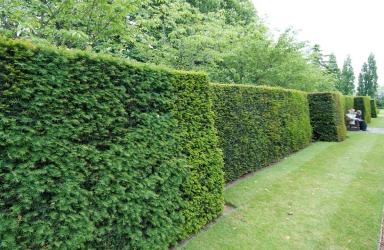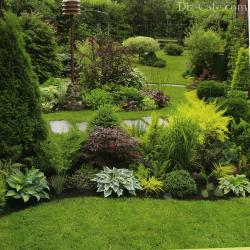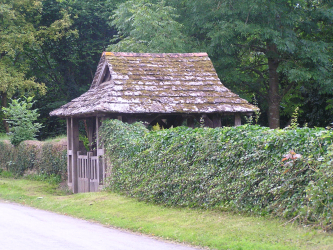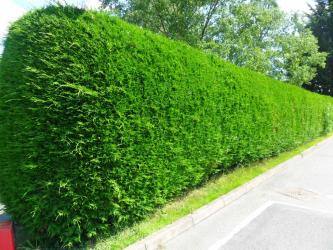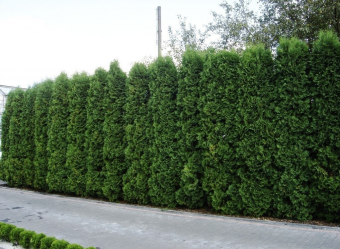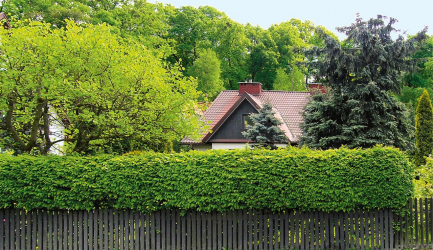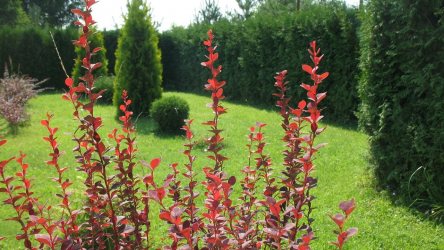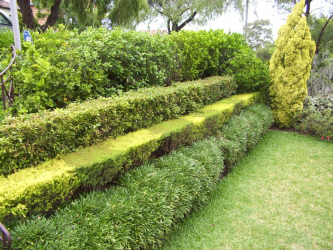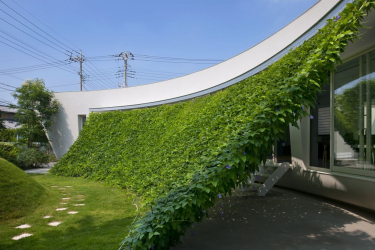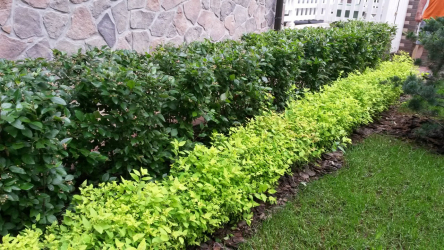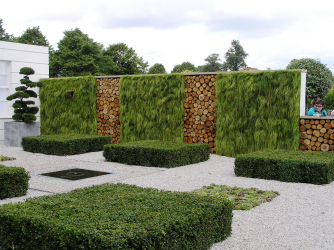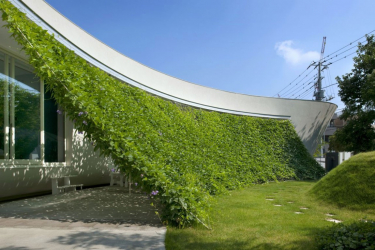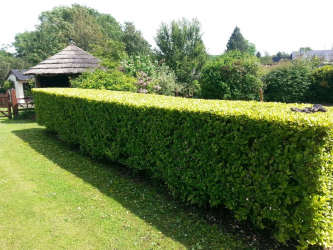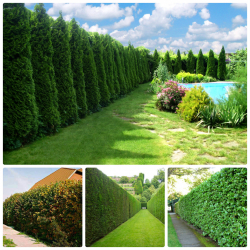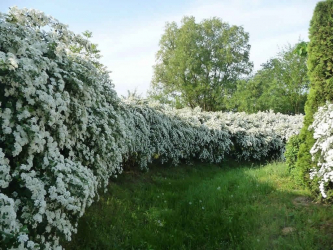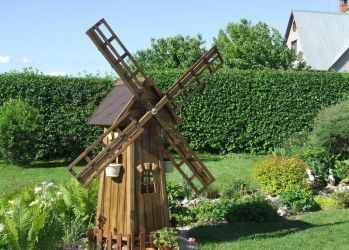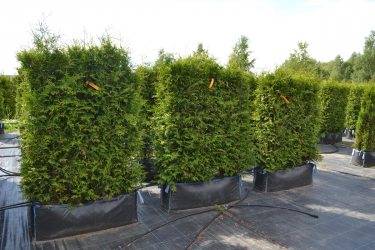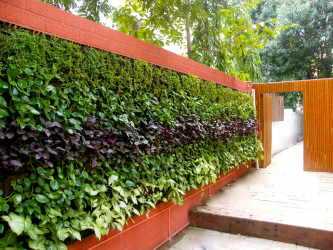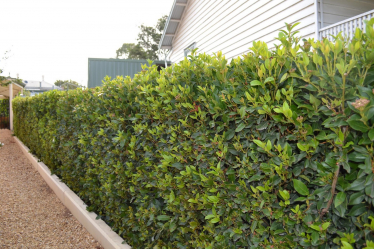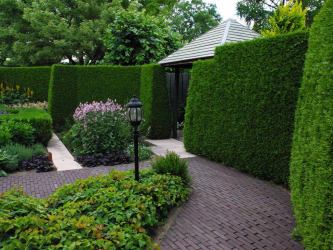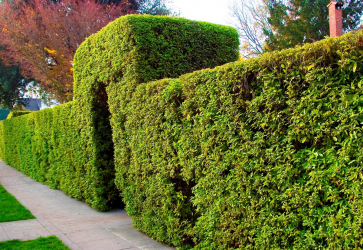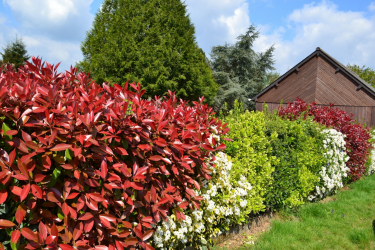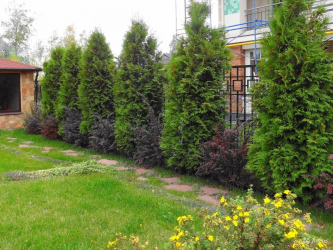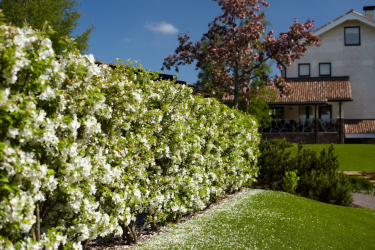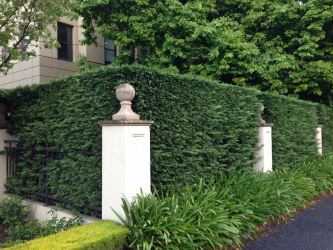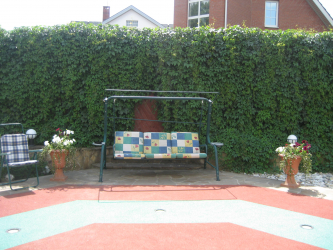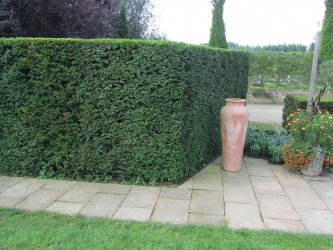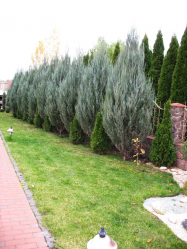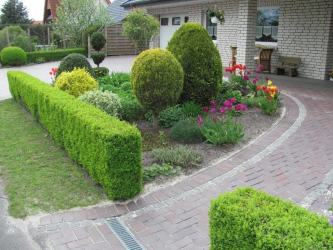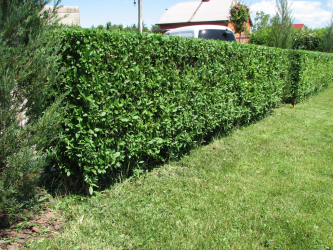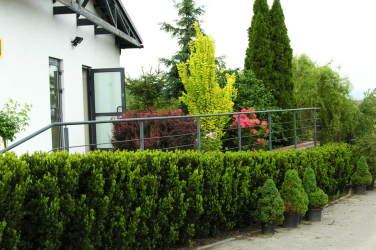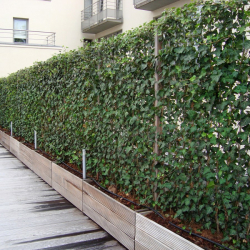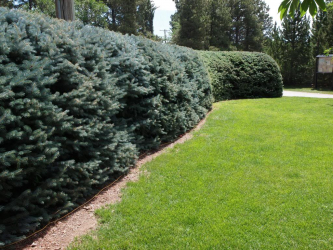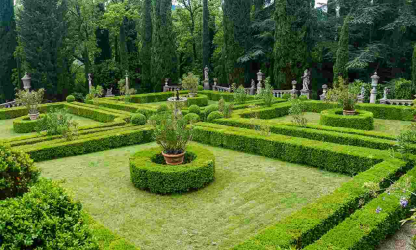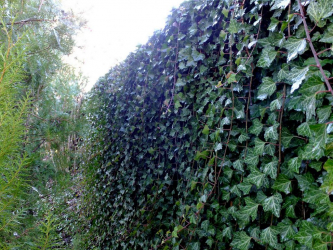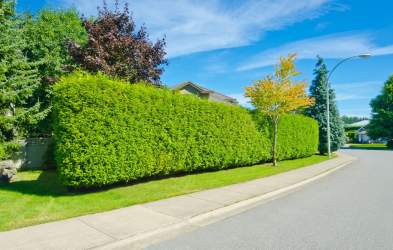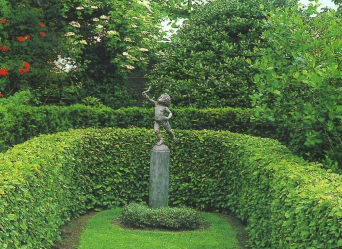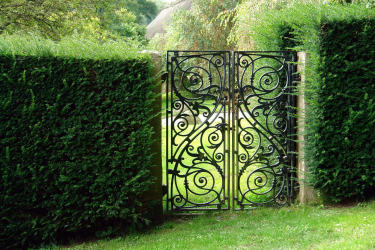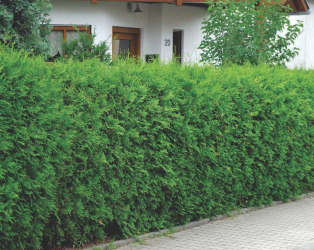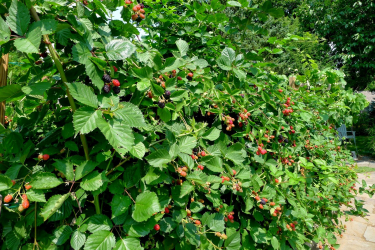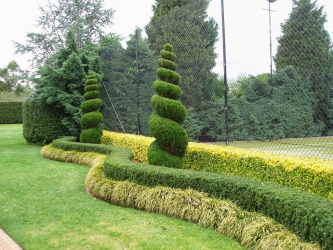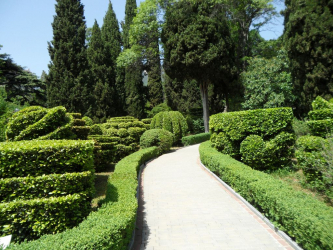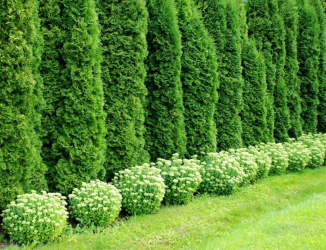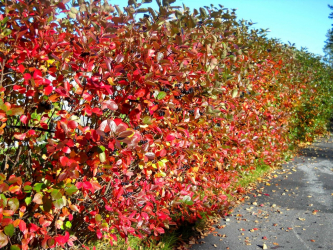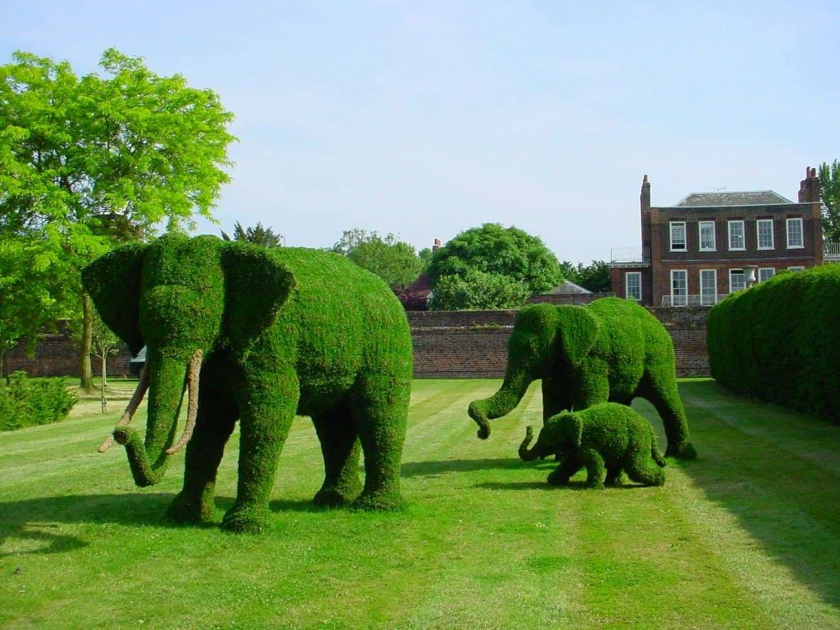
A garden is a wonderful independent world where you can relax your body and soul after a busy day of work and have a good time with friends. And curious views are not the place, let them admire the delightful design of the impenetrable green wall that you create, turning it into a hedge. Behind her you will feel secure and comfortable. Which hedge is better? What are fast growing? Where better to place? Answers to the questions you will find below in the article.
Content of this article:
Living plants
Evergreen hedges not only protect from indiscreet looks, but also restrict access to the winds, serve as an effective biofilter that cleans the air.
The green fences with the windows and the passage decorated in them look very original. They are created by metal gratings or trellis, various wooden structures.
It will be interesting to you:REVIEW: A catalog of flowers for giving (240 + Photos with names): All the rules for creating incredible beauty
return to menu ↑ return to menu ↑Which hedge is better?
However, when creating a fence from green spaces, it is necessary to take into account at least the basic rules and recommendations in the construction of such significant elements of the site.
For example, one of the main rules - the general style of the internal space of your site, for example, a garden, the fence must fully comply.
Deciduous flowering and ornamental shrubs, as well as tall grassy perennials will close you from prying eyes in the summer season.
If you are a fan of annual lianas, you can use nasturtium or echinocystis, which can form a hedge within a month and a half after seeding.
A spectacular hedge of red leaves will feel good in a clean, open space, open to the sun.
It will be interesting to you:OVERVIEW: How to make a pool at the cottage The hands (165+ Photos)? Frame, indoor, concrete - Which is better?
return to menu ↑Care
In order for the hedge to be pleased with its emerald greenery, pomp, it needs careful care. The most important part is pruning. It performs two important functions: every year it ensures the formation of young and strong shoots and supports the health of plantations.
return to menu ↑Pruning
Another important function of pruning is to lighten the thickened crown, pruning the branches that grow inwards:
- Pruning shrubs is to remove dry, dying twigs, this is the so-called sanitary pruning. At the site of the cut, new shoots are formed, which will grow abundantly and create a screen effect.
- A fencing of shrubs will not only give the site a new, beautiful look, but also create a microclimate and become a reliable protection for the harvest. It is easier to cross over open worries than through a wall of prickly shrubs 170 cm high. For planting, use two to three year old saplings of wild rose, blackthorn, hawthorn. Twice a year, in the spring, before the juice begins to move, and in the fall, when the leaves fall, they do pruning with garden shears. A little troublesome, but these pleasant troubles: a hedge protects the site from dust, which is full on the road, the site is less blown by the wind.
- First of all, you need to trim the branches that grow inward, as they receive the minimum amount of light. Shoots that stretch too high up must also be shortened. Apical buds are truncated so that the bush branches.
- After pruning, the bushes need to be fertilized with fertilizers. If the soil under the crown is not occupied with anything, distribute the fertilizer evenly over the entire area of the crown projection, and close it up by digging or loosening. In the autumn period, sprinkle the crown with 4 - 5% urea solution.
It will be interesting to you: OVERVIEW: Paths in the country from paving slabs - Design a beautiful courtyard (120+ Photos)
return to menu ↑ return to menu ↑Which plants to choose?
If you create a hedge with an eye to the future, do not rush and do not buy the first bushes. When choosing a cultural variety, several factors are taken into account:
- When buying a selected breed of plants, find out what size it will grow. For example, different species of boxwood evergreen can vary considerably in height. It can reach only one meter in height, and can reach a height of two and a half meters.
- Try not to choose too high breeds of plants, as they may cause gaps. Be sure to ask about the hardiness of selected breeds. If they freeze, the desired effect will be very difficult to achieve.
- Find out about the selected plant, whether it is deciduous or evergreen. If you are out of town only in the warm season, deciduous species will be suitable, which can change their appearance depending on the season. In spring - gentle green hawthorn and linden, golden forsythia, in autumn - warm shades of maple and euonymus.
- Find out what care selected plant breeds require. For example, a fast-growing thuyu is cut only twice a year, but not more often, and trimming yew and boxwood should be dealt with only at the beginning of summer. If you want stricter lines, cut it in March. Forever-green shrubs with large leaves are cut only with a hand pruner.
It will be interesting to you:OVERVIEW: How beautiful is it to decorate Garden paths with your own hands at low cost? 180+ Photos of suburban options from different materials (tiles, plastic, rubber)
return to menu ↑ return to menu ↑Location
A spectacular hedge of red leaves will feel good in a clean, open space, open to the sun.
In a dark place such bright foliage will look gloomy. This applies, for example, to some species of European beech or cherry plum. Plants with golden needles on hot days will seem dull. To avoid unforeseen effects, it is better to choose rocks with leaves of bright green color.
- Maples due to the bright foliage will decorate your site in the autumn. Among Far Eastern species, it is worth noting the Manchurian ash, fluffy alder, beautiful larch.
- Some hedges have thorns and spines. On the one hand, it discourages some uninvited guests, on the other - creates difficulties in regular care.
- Do not overlook and climbers. They grow quickly in sunny and shady corners of the garden. They wrap around specially designed grilles, obelisks and pavilions.
- Well proven in landscaping Kampsis with bright tassels tubular flowers. The trimmed oaks, maples, weeping lindens look great on the plots.
In your power to turn a hedge into a sea of colors and colors. You can buy ready-made, twisted plants, wooden lattices. In just one day, reliable protection from prying eyes will be ready.
It will be interesting to you:REVIEW: How to equip the summer kitchen in the country? 220+ (Photos) Do-it-yourself design projects
return to menu ↑ return to menu ↑What are fast growing?
Vertical gardening is a versatile garden decorator that allows you to achieve a stunning effect in a short time.
- Looks spectacularly girlish grapes, which itself "climbs" on the wall. Beautiful looks unpretentious hops, preferring a shady area. True, it is necessary to control its growth, otherwise it will force out other cultures from the site.
- You can create a decorative green vertical from such annual lianas as blood-red beans, nasturtium, ipomoea.
- Some herbaceous perennials are also capable of creating dense variegated walls of flowers. Two and a half meters reaches the willowy sunflower, and rudbeckia and elecampane can grow up to three meters.
- For such woven plants as roses, ipomoea, clematis, and others, it is advisable to build any support, do not forget to tie up the plants from time to time. Not all instances need to be tied up.
Such plants as Kobeya, Kampsis, just enough to start near the support. The blue flowers of the delphinium will delight you on a 1.7 meter high wall. Approximately the same height can reach the laureate, stock-rose, buzulnik.
It will be interesting to you:OVERVIEW: Barbecue area in the country: How to equip a platform with a gazebo, barbecue and grill? (180+ Photos)
return to menu ↑ return to menu ↑Thuja for hedge
Thuja is quite heat-loving, for this reason it is better to do its landing in open ground in March. But in areas with not too cold winters, you can make an autumn landing. In this situation, it is important to make it before the final freezing of the soil, because the plant simply does not take root. The latest landing is the second half of October.
return to menu ↑How to plant?
In the process of planting on the bottom of the pit, it is desirable to place a couple of buckets of humus, it must be combined with the upper fertile layer of soil. In spring, about half a pound of superphosphate should be added to the same pit. In the absence of this component, you can use a kilogram of wood ash.
- In that case, if the soil is acidic, lime or dolomite flour is added to it.
- At the pit they make drainage (15-10 cm) of fine crushed stone, gravel, broken brick, sand. Then the pit should be filled to two thirds of the volume of the prepared soil mixture.
- If possible, the landing pit should be prepared 10-15 days before planting - so that the soil settles well.
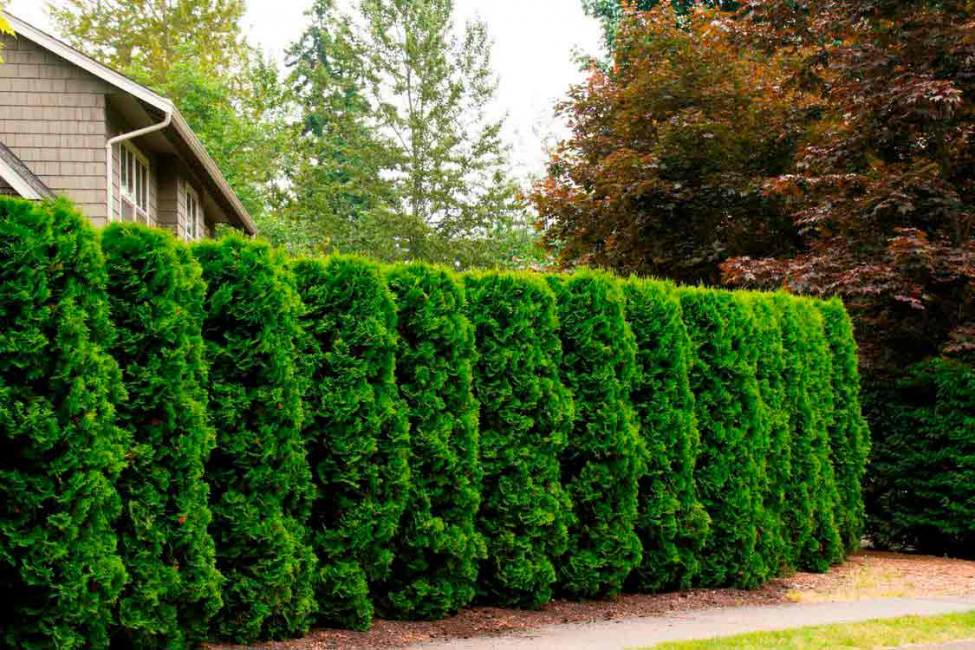
Thuja prefers illuminated places. The plant is not recommended to plant on sandstones and in windy areas
Growing, pruning and caring for green fences will not be difficult. If you follow the basic rules and agrotechnical methods, then after 2-3 years green plantings will serve as reliable and beautiful protection of the site.
return to menu ↑VIDEO: The best plants to create a hedge
Creating a hedge
Review, advantages and disadvantages
Conclusion
If you want diversity, you can arrange each of the walls with different plants: either flowers, or shrubs, or trees. Be creative and enjoy the wonderful fruits of your work!
return to menu ↑ return to menu ↑